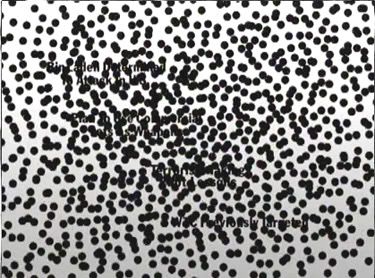Connecting the Dots
The other night on the Daily Show, Jon Stewart did a genuinely good report (truth through satire as usual) on how the President's secret wiretapping program may not be making fighting the war on terror any easier at all. At best, it may be a middleground- helping in some ways, hurting in others (and if it helps, hey let's get those warrants, people). The segment was in response to the recent New York Times report that stated:
In the anxious months after the Sept. 11 attacks, the National Security Agency began sending a steady stream of telephone numbers, e-mail addresses and names to the F.B.I. in search of terrorists. The stream soon became a flood, requiring hundreds of agents to check out thousands of tips a month.
But virtually all of them, current and former officials say, led to dead ends or innocent Americans...
Scott McClellan said at a recent White House press briefing that "What the 9/11 Commission pointed out was that there was a failure to connect the dots before the attacks of September 11th. What we've got to do is connect the dots to prevent attacks from happening."
Stewart used this quote to remind the audience of the fact that the government already had adequate tools prior to 9/11 necessary to prevent the attack, but they just didn't utilize them properly. One example that I can think of (not mentioned on the show) is the story that "Messages intercepted by U.S. intelligence may have warned of terror attacks a day before September 11, but they were not translated in time". If they had just processed the information they already had, they could have connected the dots and foreseen the attacks.
Stewart used the following graphic to illustrate the simple dots that could've been connected-

He then goes on to note that with the flood of unnecessary information to the FBI and other agencies, in addition to datamining projects, the President is adding so many dots that the relevent agencies have been swamped and often ended up at dead ends and innocent Americans (the officials interviewed by the Times mentioned getting files on teachers, etc). Finding the right clues could potentially be like looking for a needles in a haystack.
Stewart uses a second graphic to illustrate this-

You can watch the segment- here (title- 'Rampant Buggery').
It's a crude example, true, but it speaks to a larger point. We don't know how much good (or how little) this program actually does. President Bush says it's a vital tool. Vice President Cheney says it's prevented countless attacks. But, outside of plots mentioned many times before (ie. the self-aborted plot to topple the Brooklyn Bridge with blowtorches... sort of a terrorism for beginners plot), they provide little to no specific details. So we are left to have to take them at their word. And based on their track record for honesty, we have no reason to do so.
This is one issue the upcoming hearings should focus on. Of course, even if we do accept that in-depth surveillance (assuming it's focused and not just sucking up information randomly) is needed, there is still no reason to conduct outside the FISA system. And that brings me to my next post...


0 Comments:
Post a Comment
<< Home